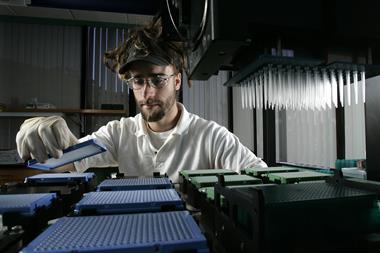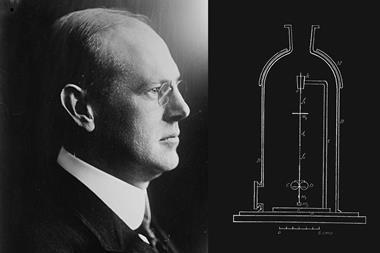Grassroots initiatives and larger projects are both vital weapons in the battle for equality
Characteristics like gender, race, or sexuality should not bar anyone from a successful career in science. So it was depressing to read a recent story in The Guardian that detailed the tremendous gender imbalance in grants awarded by the Engineering and Physical Sciences Research Council (EPSRC). The story reported that over the past decade, nearly 90% of EPSRC’s grants have gone to projects led by men. Last year, the average size of grant made to women scientists was less than 40% of what their male colleagues won.
A multitude of factors lie behind these sorry statistics. For example, last year’s figures were skewed by very large grants going to male principal investigators for work at the Culham Centre for Fusion Energy and the Henry Royce Institute in Manchester.
But the most glaring cause is that women account for only 17% of academic researchers working in engineering and the physical sciences. It shows, once again, that the barriers faced by minority groups in science are being dismantled all too slowly.
How can we accelerate this glacial progress towards improving diversity within the sciences? As a range of new initiatives shows, there is no magic bullet – instead, change must come from all directions, in many different ways.
Lines of attack
The day before The Guardian’s article appeared, EPSRC announced that it was funding 11 projects under a £5.5 million initiative called Inclusion Matters, which aims to improve equality, diversity and inclusion in the academic areas that the council funds.
Some of these projects are on fact-finding missions to identify the barriers that block the career progress of minority groups in academia, including women, scientists with disabilities and those who identify as LBGTQ. For example, one is investigating why previous equality initiatives have faced indifference, or even negativity, from academics.
Others are making proactive interventions, such as promoting diversity in university spin-out companies. Several include ‘reverse mentoring’ programmes – a junior female academic who identifies as black, Asian or minority ethnic might coach a white male professor, for example. This not only helps senior staff to better understand the career challenges of those from different backgrounds, it also builds more diverse academic networks.
Diversity is particularly poor at the most senior levels of academic science, which exacerbates imbalances in the size of EPSRC’s grants. So one of the Inclusion Matters projects is studying the so-called ‘big grant club’, whose membership is overwhelmingly white and male. Working with social scientists, the project will look at how people are inducted into this exclusive club and how its culture operates.
It’s heartening that the projects are led by very senior academics. With buy-in from the top brass in universities, it suggests that these initiatives could have a significant effect at an institutional level. But big isn’t necessarily best: small, grassroots projects also have the potential to make an enormous impact.
Guerrilla action
One shining example was launched just a few weeks after the Inclusion Matters projects. Diversify Chemistry allows chemists to add themselves to an online database that is searchable by their research interests and how they self-identify, alongside their email address or Twitter handle.
Anne McNeil, a chemist at the University of Michigan, decided to create the site after seeing a succession of all-male speaker panels being announced by conference organisers. By providing an easy way to find a more diverse range of people, she hopes that seminars, journal editorial boards, and peer review panels can better represent the variegated world of chemistry. Only after it launched did McNeil realise that it could also grow into a valuable resource for science journalists. More than 160 people have signed up so far, mostly from the USs, but it is open to chemists anywhere in the world and McNeil is hoping to reach at least 1000 profiles.
McNeil was inspired by a similar website for ecologists and evolutionary biologists, and it took just $6600 in discretionary funding from her university to hire a professional web designer. She had considered applying for a grant from a funding agency, but then discounted the idea: ‘All I thought was, this’ll take five years, and I really want to do this now,’ McNeil told me.
Meanwhile, physicist Jessica Wade at Imperial College London is on a mission to populate Wikipedia with more pages about female scientists, and her efforts have also picked up news coverage in recent weeks. Wade has already created more than 300 biographical pages in her spare time, and part of a broader movement to address the dramatic under-representation of female scientists in the online encyclopedia.
It’s hard not to wonder how many grassroots projects like these could have been funded by the £5.5 million allocated to Inclusion Matters. And cost isn’t the only issue: grassroots initiatives are often quicker to get off the ground, allowing successful ideas to be replicated many times in different countries or academic fields.
But we also need bigger, top-down approaches like Inclusion Matters. Lack of diversity is in part an institutional problem, so institutions need to play an active role in fixing it. Making large-scale investments in projects that involve many academics also creates a critical mass of participants who are all pushing for change.
When it comes to improving equality and inclusion, a diversity of approaches really is the best policy.















No comments yet